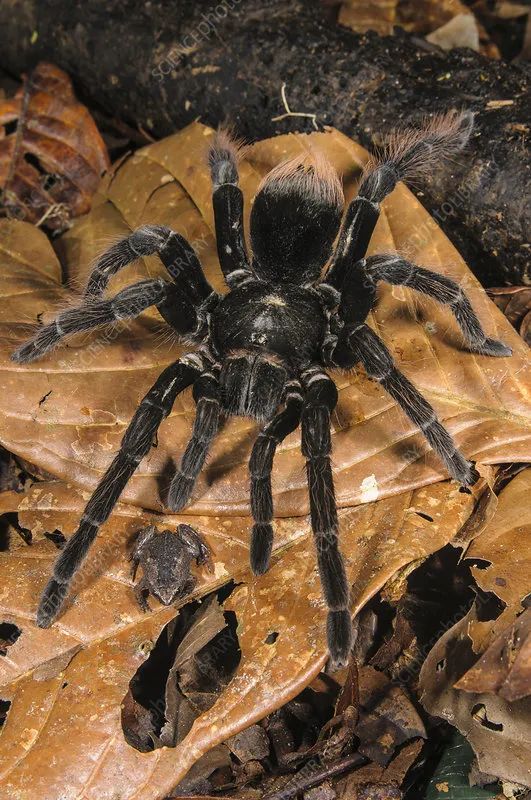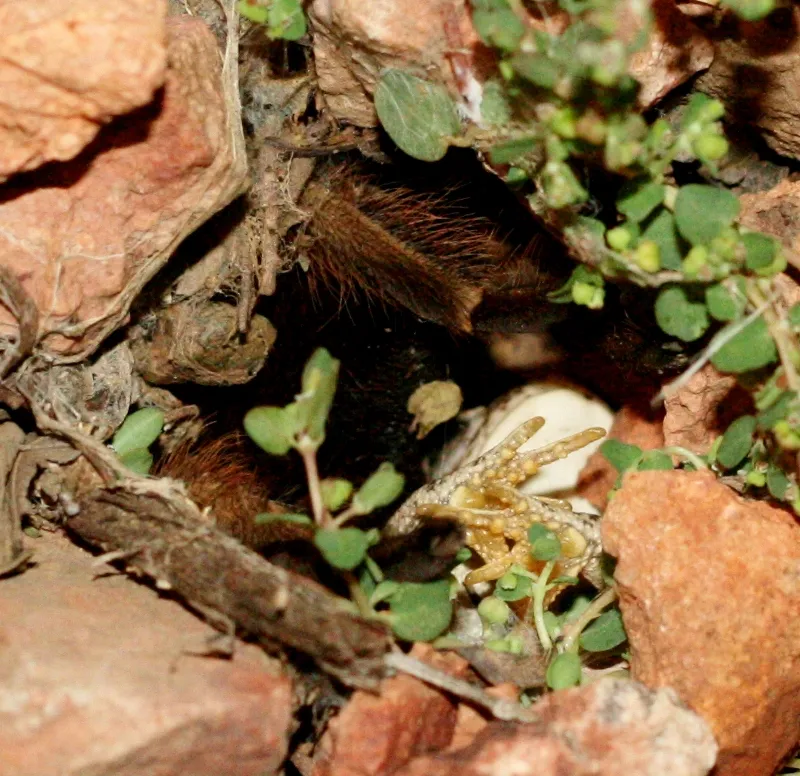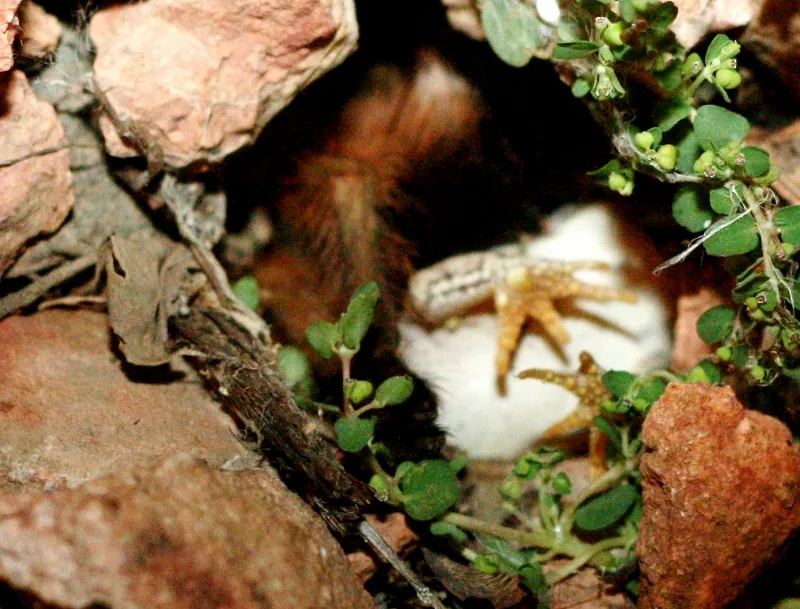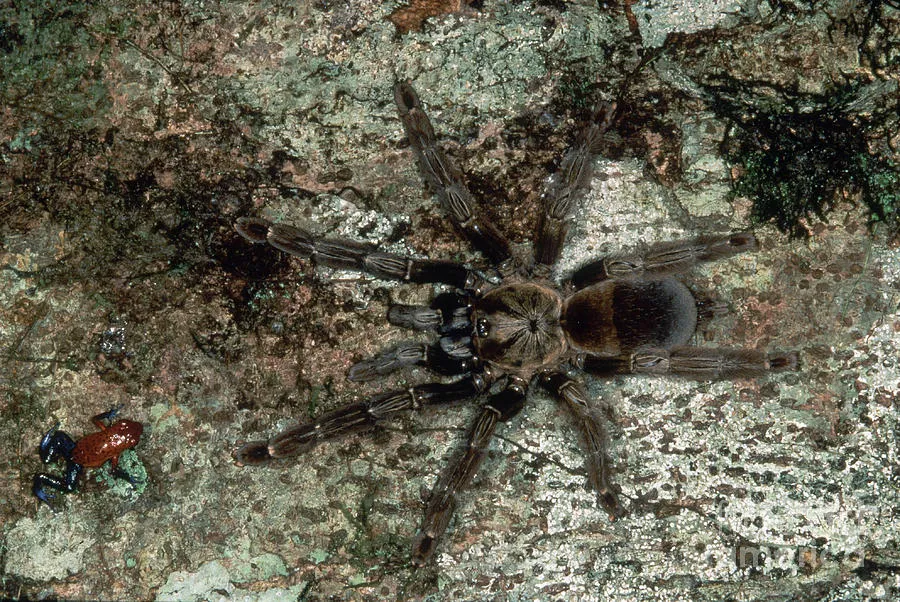Understanding Tarantula and Frog Interactions
The encounter between a tarantula and a frog is a dramatic event in the wild, a real-life display of predator versus prey. This interaction, played out in various ecosystems, highlights the survival strategies of both creatures. The tarantula, a large, hairy spider, and the frog, a typically smaller amphibian, often find themselves in direct competition for resources, sometimes leading to life-or-death scenarios. Understanding the dynamics of these interactions, from the perspective of both the predator and the prey, offers insights into the natural world’s complex balance and the survival mechanisms that have evolved over millennia. This knowledge can also help those interested in these creatures to protect them or observe them safely.
Tarantula Behavior and Predatory Instincts
Tarantulas, primarily nocturnal hunters, are ambush predators, relying on stealth and quick reflexes. Their behavior is driven by their need to feed, and frogs, being smaller and potentially vulnerable, can become targets. The tarantula’s predatory instincts are deeply ingrained, with specialized adaptations for capturing and subduing prey. They possess fangs capable of injecting venom, which paralyzes or kills their victims, and strong legs for grasping and holding their catch. Their bodies are covered with sensory hairs that detect vibrations, helping them locate and assess potential prey in their environment. The way a tarantula stalks, attacks, and consumes a frog is a testament to its efficiency as a predator and its adaptation to its environment.
Tarantula Hunting Techniques

Tarantulas employ a variety of hunting techniques, mostly depending on the species and the environment. Some tarantulas will actively stalk their prey, moving slowly and deliberately, while others prefer to wait in ambush, concealed in burrows or under cover. When a frog comes within range, the tarantula strikes with surprising speed, using its fangs to inject venom. The venom serves to both paralyze the frog and begin the process of breaking down its tissues. Once the frog is subdued, the tarantula will carry it back to its burrow or feeding site to consume it. The tarantula’s hunting methods showcase its role in the ecosystem’s food web.
Frog Behavior and Defense Mechanisms
Frogs, as prey animals, have developed several defense mechanisms to survive tarantula attacks. These adaptations are crucial for their survival and demonstrate the ongoing evolutionary arms race between predator and prey. Their strategies range from camouflage, blending into their surroundings to avoid detection, to the ability to leap long distances to escape. Some frog species have toxic skin secretions, which deter predators from attempting to eat them. These survival tools offer the frog a fighting chance in encounters with tarantulas or other predators. The frog’s behavior reflects a constant state of vigilance, adapting to environmental threats and striving for survival.
Frog Camouflage and Escape Tactics
Camouflage plays a significant role in a frog’s defense strategy, allowing it to blend seamlessly with its surroundings. The frog’s skin coloration often matches the environment, providing effective concealment. When faced with a tarantula, frogs attempt to hide by remaining still or leaping to safety. Their ability to jump long distances is another vital defense mechanism, enabling them to evade predators and escape the immediate threat. In situations where escape is not an option, the frog might employ other tactics, like inflating its body to appear larger and less appealing to the tarantula. These adaptations give frogs a better chance of surviving in predator-rich environments.
Factors Influencing the Outcome of an Encounter

Several factors determine the outcome of a tarantula-frog encounter, including the sizes of the animals involved, the specific species, and the prevailing environmental conditions. The balance of these factors can significantly shift the odds of survival for either the tarantula or the frog. Understanding these elements gives you a better understanding of the challenges each animal faces. The interactions are complex, and the success rate of either predator or prey can vary greatly.
Size and Species of Tarantula and Frog
The relative sizes of the tarantula and the frog are a major determinant of the encounter’s outcome. A larger tarantula has a greater chance of subduing a smaller frog. Some tarantula species, such as the Goliath Birdeater, are among the largest spiders in the world and are capable of taking down larger prey. Likewise, the species of both the tarantula and the frog are vital. Certain tarantula species are known to be more aggressive hunters, and some frog species may have more effective defenses, such as toxicity or camouflage. The combination of sizes and species helps determine which animal will prevail in a confrontation.
Environmental Conditions and Their Impact
Environmental conditions, such as temperature and humidity, can affect the behavior and success of both the tarantula and the frog. For instance, warmer temperatures can speed up a tarantula’s metabolism, making it more active and increasing its hunting efficiency. Similarly, humidity levels influence a frog’s ability to move and its overall health. The availability of cover, such as leaves or rocks, also matters, providing hiding spots for frogs and ambush opportunities for tarantulas. These environmental factors add another layer of complexity to the interactions, influencing which creature gains the upper hand.
How to Protect Frogs from Tarantulas

Protecting frogs from tarantulas involves creating and maintaining safe habitats, reducing the presence of tarantulas near frog populations, and intervening when appropriate. The following suggestions provide practical steps to protect and support frogs from the threats of tarantulas and other predators.
Creating a Safe Habitat for Frogs
Establishing a safe habitat is essential for frog survival. This includes providing ample sources of water, like ponds or pools with shallow edges that allow easy access. Adding dense vegetation creates hiding places, helping frogs avoid predators. Minimize the use of pesticides and other chemicals, which can harm frogs directly or reduce their food supply, impacting the health of the entire ecosystem. Regular maintenance and creating a balanced ecosystem help ensure that frogs have a safe place to thrive. Creating this environment supports the frog’s safety and helps maintain the natural balance in the area.
Reducing Tarantula Presence
To reduce the likelihood of tarantulas encountering frogs, it’s essential to manage the environment around frog habitats. This involves removing potential tarantula shelters, such as piles of wood or leaf litter, and limiting the insects that serve as their food source. Avoid using bright lights at night, as they can attract insects, which in turn, may draw in tarantulas. In areas where tarantulas are common, consider installing physical barriers, such as fine mesh screens, around frog habitats to prevent access. These steps help create a safer environment for the frogs, reducing the risk of predation.
What to do if You Witness an Encounter

Witnessing a tarantula-frog encounter can be an intense experience, raising questions about how to react. Understanding the dynamics, respecting the natural processes, and considering responsible intervention is essential.
Observing the Interaction
If you witness a tarantula and frog encounter, observe the interaction from a distance, trying not to interfere. Documenting what happens, taking notes, and capturing photos or videos can contribute to scientific understanding. This also helps in understanding the behaviors of both the predator and prey. Observing the encounter without interference helps preserve the natural dynamics and provides a better understanding of their interactions. Safety is paramount; ensure you maintain a safe distance to avoid any potential danger from either the tarantula or any surrounding hazards.
Intervention Strategies
Intervention decisions depend on your perspective and the circumstances of the encounter. If the frog appears to be in immediate danger and the tarantula hasn’t yet injected venom, you may consider carefully separating the two animals using a long object or tool. If the frog is already paralyzed, the intervention might be too late. If you decide to intervene, focus on the frog’s welfare by moving it to a safe location away from the tarantula. Respect the creatures and the natural processes, and remember that your actions should be for the benefit of both the frog and the environment. Make your intervention choices based on the need for protection, keeping safety in mind.
